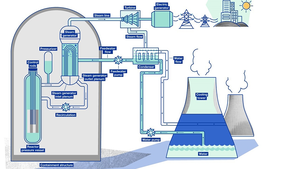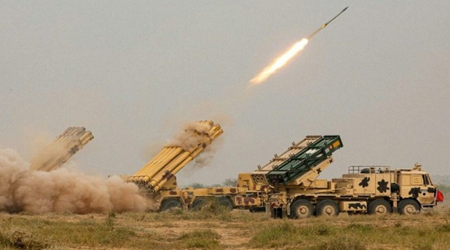
New Delhi: When in the post-Cold War era ‘proxy war’ emerged as the new weapon by which an opponent could be brought down — without an engagement in the ‘battlefield’ — this basically had two connotations.
One was the resort to planned ‘covert’ violence through the use of terror groups that could launch what is termed as an ‘asymmetric war’ against the enemy and cause a serious dent in the fighting power of the latter.
The other was a widening of the sphere of combat — beyond the conventional warfare — in which the opponent’s economy would be damaged, the youth on the other side would be trapped in the evil consequences of narcotics and an organised campaign would be conducted to sully the image of the targeted country nationally and internationally.
Terrorism, particularly where it is based on exploitation of faith-related motivation, has now emerged as the global threat to the democratic world as a whole.
Terror groups make covert attacks but they had sophisticated weapons of the kind available only with the Army in the past — this has happened because countries like Pakistan continued to blatantly use ‘Islamic Terrorism’ as an instrument of state policy, specially against India.
The advent of social media is now hastening a form of propaganda warfare in which organised attempts were made to float ‘narratives’ running down the opponent’s regime in a manner that its people would lose faith in it.
‘Influence Operations’ are now in full play as an extension of ‘proxy war’.
In 2020, Facebook took down a network of more than 300 accounts that were being run from China — they were posting content about US elections and also on Covid epidemic and working together to make it more convincing for the American public than all the claims of the party in power or the government of the day, could do.
Since then Artificial Intelligence-driven pro-China propaganda based on a deft exploitation of YouTube’s algorithmic system for rapidly producing and publishing content, has been making a steady advance.
Authentic studies like the one carried out by the Australian Strategic Policy Institution (ASPI) have revealed how an extensive network of YouTube channels promoted ‘pro-China’ and ‘anti-US’ public opinion in the English-speaking world.
The current disclosure requirements about sponsored content have glaring gaps when it comes to addressing cross-border ‘influence campaigns’.
Creators of content do not always provide information on who they were, where are they based and what was their background.
Unrestricted spread of Artificial Intelligence (AI) propaganda could undermine truth and manipulate real world events.
AI-aided ‘psy ops’ have the ability to ‘spoof identities, survey citizens en masse and automate disinformation production’.
India has strongly advocated for the idea of international regulation and monitoring of AI operations and transparency of research on AI, to minimise the chances of its misuse as a strategic weapon and to promote its advancement for the general good of the humanity.
Prime Minister Narendra Modi co-chaired AI Action Summit in Paris in February 2025, along with President of France, Emmanuel Macron, and declared that India’s AI strategy was built on ‘inclusivity, accessibility and affordability’.
He pointed out that India had built a Digital Public Infrastructure (DPI) at a very low cost.
The theme of the Summit was ‘developing open AI infrastructure for social, economic and environmental benefits’.
Since videos are backed by a large apparatus of government agencies, state-controlled news media and other official amplifiers as is the case with China, it is not difficult for Beijing to spread propaganda messages around the world.
Funds are used to disseminate the content of the influencers.
The Chinese Communist Party has marshalled diplomats and state news outlets to carry its ‘narratives’ forward and drown out criticism with the help of its army of shadowy assets.
It is reported that classic Intelligence techniques are employed by China’s Internet regulator to buy out media companies and engage foreign internet celebrities to highlight government’s success in alleviating poverty and to counter reports of forced labour being used in Xinjiang’s cotton farms.
Even Chinese embassies in Europe and elsewhere were made to put out propaganda to this effect in their Facebook pages.
India is aware of the ‘influence operations’ of China and is stepping up measures to deal with them.
In fact, India has to fully prepare itself for the doings of the Sino-Pakistan axis in the field of ‘influence warfare’.
This anti-India strategic alliance was active against India post-Pahalgam — over and above the direct support extended to Pakistan by Turkey, Azerbaijan and Malaysia, the group of countries that had an antipathy towards US and a favourable disposition for radical Islamic forces.
China has tried to push Iran towards Pakistan and strengthen its own hold in Afghanistan.
Pakistan had earlier brought about a ‘give and take’ arrangement between the fundamentalist Taliban-led Islamic Emirate of Afghanistan and the Communist China.
China supports Pakistan on Kashmir issue because of its own strategic interest in Pakistan Occupied Kashmir since the China-Pakistan Economic Corridor (CPEC) passed through the northern areas.
China is now trying to link CPEC with its Belt and Road Initiative (BRI) in Afghanistan.
Pakistan’s Inter-Services Intelligence (ISI) has evidently stepped up its terror offensive in both Kashmir and Punjab — the blast in Amritsar on May 27 is attributed to Babbar Khalsa International (BKI), which was known for its direct links with ISI.
India has to watch out for US-Pakistan relations as much as for the collusive China-Pakistan alliance against India.
In the context of a desperate Pakistan reaching out to US President Donald Trump — when the going became tough for it due to the strong retaliatory action taken by India in the wake of the terrorist attack at Pahalgam — it seemed Trump showed a certain degree of interest in Pakistan as a potential trade partner but without doing anything against India’s strategic interests.
India’s diplomatic strength is going to be tested in the handling of the triangular US-India-Pakistan relations — this should not be a big challenge so long as President Trump keeps India and Pakistan ‘de-hyphenated’.
Trump’s innate aversion to ‘Islamic terrorism’ should add to India’s advantage.
Coming back to the ‘influence operations’ of Sino-Pakistan combine that had come to the fore, it needs to be mentioned that India needed to step up its scan of the social media — this was already being done — to detect any ‘proxy war offensive’ emanating from there and find ways and means of countering it on an ongoing basis.
This has to be done by the security and political leadership of the nation in a combined way since the countermeasures would involve diplomatic, trade and military-related steps to make for an integral response.
Prime Minister Modi has now established that such a response would be based on zero tolerance towards terrorism, acceptance of a mutually beneficial economic relations with the US and a commitment to the holistic development of India that did not leave anyone behind.
The fact that both US and Russia had given recognition to India as an emerging world power that would not get aligned with either side in a situation of potential return of the Cold War between US on the one hand and the China-led axis embracing Russia on the other, gives this country a new strength.
Once again however, India’s internal management seemed to be a greater challenge than the handling of international relationships because of a lack of strategic convergence between the ruling party and the opposition and the unending domestic disharmony on caste, creed and regional matters. This should be understood and quickly resolved.
(The writer is a former Director of the Intelligence Bureau. Views are personal)
–IANS
dcpathak/khz







